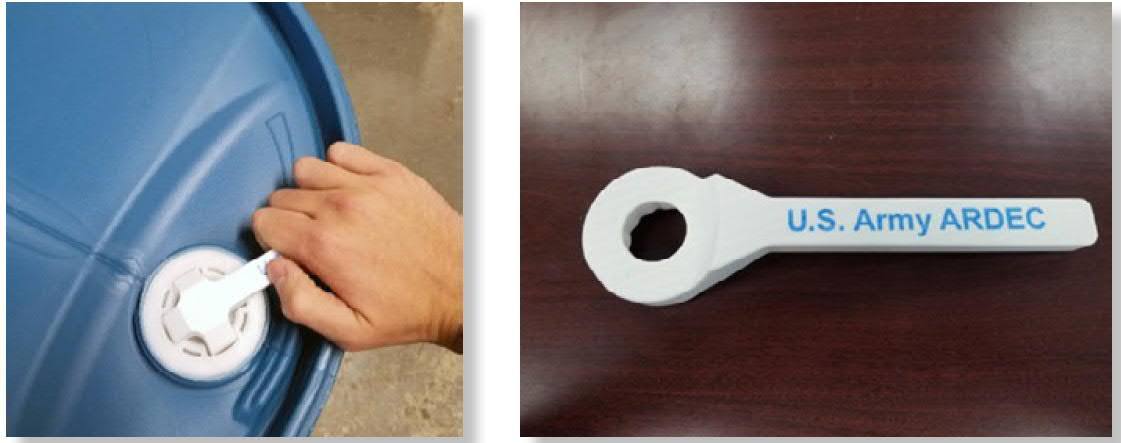The Armament Research, Development and Engineering Center (ARDEC) of the U.S. Army in New Jersey has acquired a Rize One 3D printer for the on-demand manufacturing of spare parts and tools.
Rize One was commercially introduced by RIZE, a Massachusetts-based 3D printer manufacturer, in 2017. It uses the company’s proprietary APD technology which combines extrusion and ink jetting simultaneously to build 3D parts.
James Zunino, Materials Engineer at ARDEC, said, “A system can go down because of one missing part and something like 3D printing can get you back in the fight. That’s a huge benefit to the Army.”
“If a handle is broken on purge pump or wheel is damaged on an EOD robot, you can print a new one.”

ARDEC manufacturing laboratories
ARDEC is the primary munitions and armament research hub of the U.S. military. Its various branches include CNC, laser machining, and additive manufacturing operations. Part of ARDEC’s Benet laboratories is the Additive Manufacturing Facility which operates the Optomec‘s 850 R LENS System and the Rapid Prototyping Facility, housing Viper Si2, SLA 3500 by 3D Systems, Dimension Elite and Objet500 Connex3 PolyJet by Stratasys.
In addition to manufacturing machinery, ARDEC’s Advanced Composites Lab is responsible for manufacturing and analyzing materials such as polymers, metals, ceramics, and carbon composites.
The Rize One printer was acquired by the Advanced Materials Technology Branch (AMTB) of ARDEC. This facility already has twenty-five 3D printers ranging between $500 and $500k.
Rize One Augmented Polymer Deposition
Rize One has impressed soldiers with its minimal post-processing requirements. The support structure 3D printed by Rize One is easy to remove and a part does not need to be soaked in a solvent for hours. Before acquiring Rize One the ARDEC units were using FDM/FFF printers, whose 3D printed parts needed to be submerged in a solvent for 4-6 hours to remove the dissolvable supports.
On the simple post-processing abilities of the Rize One, AMTB Scientist Matthew Brauer said, “It’s easy to peel away supports from intricate geometries, and that provides a faster part in the soldier’s hand.”

At the ARDEC base, some of the practical application of the Rize One 3D printer include manufacturing of spare parts such as window knobs of Humvees, openers for chemical drums, and generator wrench.
Accelerating additive
In recent years, the U.S. Army and U.S Air Force (USAF) have made efforts to accelerate the adoption of 3D printing technology into their wider manufacturing operations. USAF’s MAMLS project is a good example in this regards.
The Rize One furthers the goal of U.S Army. With Rize One’s ink-jetting system, serial number and QR codes can be printed onto the spare parts. A QR code can generate a digital thread back to the original design with detailed information on the part.
Zunino commented, “I think having accountability and provenance of a part is huge in the general acceptance of AM parts […] A lot of it is trust in the new technology and this really helps build some of that trust.”

Nominations for 2019 3D Printing Awards are open. You can name the best applications of 3D printing.
For more news on the latest research in additive manufacturing subscribe to our 3D printing newsletter, and join us on Facebook and Twitter for live updates.
Our 3D Printing Jobs page has a lot of exciting careers waiting for you.
Featured image shows a barrel opener and a wrench 3D printed with Rize One. Image via RIZE.


